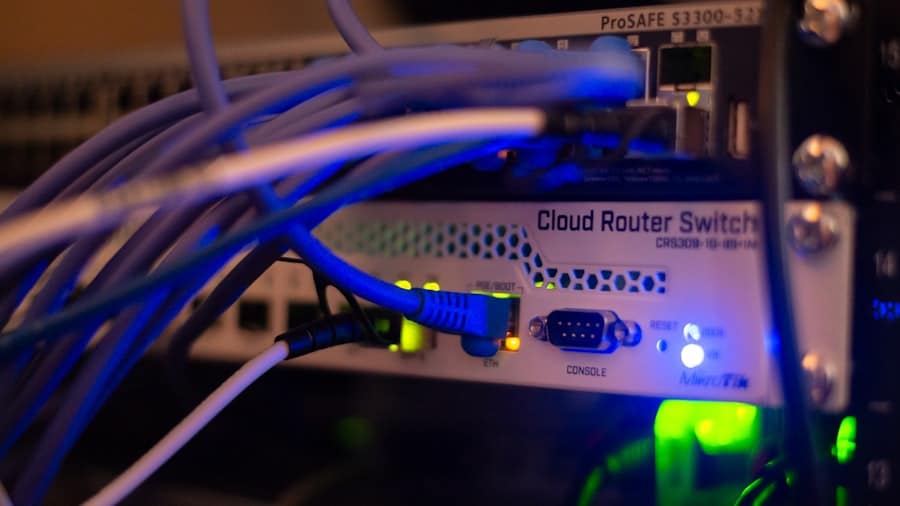Insider cyber threats represent a significant and often overlooked risk in the realm of cybersecurity. Unlike external threats, which originate from outside an organization, insider threats come from individuals within the organization, such as employees, contractors, or business partners. These insiders may exploit their access to sensitive information and systems for various malicious purposes, including data theft, sabotage, or espionage.
The motivations behind these actions can vary widely, ranging from financial gain to personal grievances or even ideological beliefs. The complexity of human behavior makes insider threats particularly challenging to detect and mitigate. The impact of insider threats can be devastating.
According to a report by the Ponemon Institute, the average cost of an insider threat incident can reach into the millions of dollars when considering factors such as data loss, system downtime, and reputational damage. Moreover, the frequency of these incidents is on the rise, with many organizations reporting an increase in insider-related breaches over recent years. This trend underscores the urgent need for organizations to develop robust strategies for identifying and mitigating insider threats, particularly as the digital landscape continues to evolve and expand.
Key Takeaways
- Insider cyber threats pose a significant risk to organizations and can result in data breaches and financial losses.
- Artificial intelligence plays a crucial role in enhancing cybersecurity by enabling proactive threat detection and response.
- AI can help identify insider threats by analyzing patterns of behavior and detecting anomalies in user activities.
- Preventing insider threats with AI involves implementing access controls, monitoring user behavior, and detecting unusual activities in real-time.
- Using AI for insider threat detection offers benefits such as improved accuracy, faster response times, and the ability to handle large volumes of data efficiently.
Understanding the Role of Artificial Intelligence in Cybersecurity
Artificial intelligence (AI) has emerged as a transformative force in the field of cybersecurity, offering innovative solutions to combat a wide array of cyber threats, including insider threats. AI encompasses a range of technologies, including machine learning, natural language processing, and predictive analytics, which can analyze vast amounts of data at unprecedented speeds. This capability allows organizations to identify patterns and anomalies that may indicate malicious behavior, thereby enhancing their overall security posture.
One of the most significant advantages of AI in cybersecurity is its ability to learn from historical data and adapt to new threats. Traditional security measures often rely on predefined rules and signatures to detect intrusions, which can be ineffective against sophisticated attacks that evolve over time. In contrast, AI systems can continuously improve their detection algorithms by analyzing new data inputs and adjusting their models accordingly.
This dynamic approach enables organizations to stay ahead of emerging threats and respond more effectively to potential insider risks.
Identifying Insider Threats with AI
The identification of insider threats is a complex process that requires a nuanced understanding of user behavior and access patterns. AI plays a crucial role in this process by leveraging advanced analytics to monitor user activities across various systems and applications. By establishing a baseline of normal behavior for each user, AI can detect deviations that may signal potential insider threats.
For instance, if an employee who typically accesses files related to their job suddenly begins downloading large volumes of sensitive data unrelated to their work, this anomaly could trigger an alert for further investigation. Moreover, AI can analyze contextual factors surrounding user behavior, such as time of access, location, and device used. This contextual awareness enhances the accuracy of threat detection by providing a more comprehensive view of user activities.
For example, if an employee accesses sensitive information from an unusual location or at an odd hour, AI systems can flag this behavior for review. By correlating various data points, AI can help security teams identify potential insider threats before they escalate into more serious incidents.
Preventing Insider Threats with AI
While identifying insider threats is critical, prevention is equally important in mitigating risks associated with malicious insiders. AI can play a pivotal role in developing proactive measures that deter potential insider threats before they materialize. One effective strategy involves implementing user behavior analytics (UBA) powered by AI algorithms.
UBA continuously monitors user activities and establishes behavioral baselines, allowing organizations to detect early warning signs of potential malicious intent. In addition to monitoring user behavior, AI can also facilitate the implementation of access controls based on risk assessments. By analyzing user roles and responsibilities alongside their access patterns, AI can recommend adjustments to permissions that minimize exposure to sensitive data.
For instance, if an employee’s role changes or if they exhibit suspicious behavior, AI systems can automatically adjust their access rights to limit their ability to engage in potentially harmful activities.
The Benefits of Using AI for Insider Threat Detection
The integration of AI into insider threat detection offers numerous benefits that enhance an organization’s ability to safeguard its assets. One of the most significant advantages is the speed at which AI can process and analyze data. Traditional methods of threat detection often involve manual reviews and lengthy investigations, which can delay response times and allow potential threats to escalate.
In contrast, AI systems can analyze vast datasets in real-time, enabling security teams to respond swiftly to suspicious activities. Another key benefit is the reduction of false positives associated with traditional threat detection methods. Many conventional systems rely on static rules that may not accurately reflect the complexities of user behavior.
This often leads to an overwhelming number of alerts that security teams must sift through, resulting in alert fatigue and potentially overlooking genuine threats. AI’s ability to learn from historical data allows it to refine its detection algorithms continually, leading to more accurate identification of true threats while minimizing false alarms.
Challenges and Limitations of AI in Insider Threat Detection
Bias in AI Algorithms
One significant concern is the potential for bias in AI algorithms. If the training data used to develop these algorithms contains inherent biases or reflects historical inequities, the resulting models may produce skewed results that disproportionately target certain groups or individuals.
Data Quality and Quantity
The effectiveness of AI in detecting insider threats relies heavily on the quality and quantity of data available for analysis. Organizations must ensure they have comprehensive logging and monitoring systems in place to capture relevant user activities accurately. Inadequate or incomplete data can hinder AI’s ability to establish accurate behavioral baselines and detect anomalies effectively.
Staying Ahead of Emerging Threats
Furthermore, as cyber threats continue to evolve rapidly, organizations must invest in ongoing training and updates for their AI systems to ensure they remain effective against emerging tactics employed by malicious insiders. This requires a commitment to continuous improvement and adaptation to stay ahead of the evolving threat landscape.
Best Practices for Implementing AI for Insider Threat Detection
To maximize the effectiveness of AI in detecting insider threats, organizations should adopt several best practices during implementation. First and foremost, it is essential to establish clear objectives for the use of AI in cybersecurity initiatives. Organizations should define specific goals related to insider threat detection and prevention, ensuring alignment with overall security strategies.
Another critical practice involves fostering collaboration between IT security teams and other departments within the organization. Effective communication between stakeholders can help ensure that AI systems are designed with a comprehensive understanding of organizational workflows and user behaviors. Additionally, involving employees in discussions about insider threat awareness can promote a culture of vigilance and accountability.
Regularly reviewing and updating AI models is also vital for maintaining their effectiveness over time. As new threats emerge and user behaviors change, organizations must adapt their AI systems accordingly. Continuous training using fresh data will help ensure that detection algorithms remain relevant and capable of identifying evolving insider threats.
The Future of AI in Insider Threat Detection
Looking ahead, the future of AI in insider threat detection appears promising yet complex. As technology continues to advance, we can expect AI systems to become increasingly sophisticated in their ability to analyze user behavior and detect anomalies indicative of insider threats. Innovations such as deep learning and neural networks may enhance the predictive capabilities of AI models, allowing organizations to anticipate potential risks before they materialize.
Moreover, as organizations increasingly adopt cloud-based solutions and remote work arrangements become more prevalent, the landscape for insider threats will continue to evolve. AI will need to adapt accordingly by incorporating new data sources and monitoring capabilities that reflect these changes in work environments. The integration of AI with other emerging technologies such as blockchain could also provide additional layers of security by enhancing data integrity and traceability.
However, as organizations embrace these advancements, they must remain vigilant about ethical considerations surrounding privacy and bias in AI systems. Striking a balance between effective threat detection and respecting individual privacy rights will be crucial as we navigate this evolving landscape. Ultimately, the successful implementation of AI for insider threat detection will depend on a combination of technological innovation, ethical considerations, and a commitment to fostering a culture of security awareness within organizations.
If you are interested in how AI can enhance various aspects of technology, you may also want to check out this article on the best AI video generator software available today. This technology can revolutionize the way videos are created and edited, making the process more efficient and effective.
FAQs
What is insider cyber threat?
An insider cyber threat refers to a security risk posed by individuals within an organization, such as employees, contractors, or business partners, who misuse their access to the organization’s systems and data for malicious purposes.
How does AI help detect insider cyber threats?
AI helps detect insider cyber threats by analyzing large volumes of data to identify patterns and anomalies that may indicate suspicious behavior. AI can also automate the monitoring of user activities and flag any unusual or unauthorized actions.
What are some common indicators of insider cyber threats?
Common indicators of insider cyber threats include unauthorized access to sensitive data, unusual login times or locations, excessive file downloads, and attempts to bypass security controls.
How can AI help prevent insider cyber threats?
AI can help prevent insider cyber threats by continuously monitoring user behavior and identifying potential risks in real-time. AI can also assist in implementing proactive security measures, such as access controls and user authentication, to prevent unauthorized activities.
What are the benefits of using AI for insider threat detection?
The benefits of using AI for insider threat detection include improved accuracy in identifying potential threats, faster response times to security incidents, and the ability to analyze large and complex data sets that may be challenging for human analysts to process.



